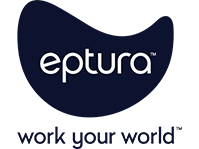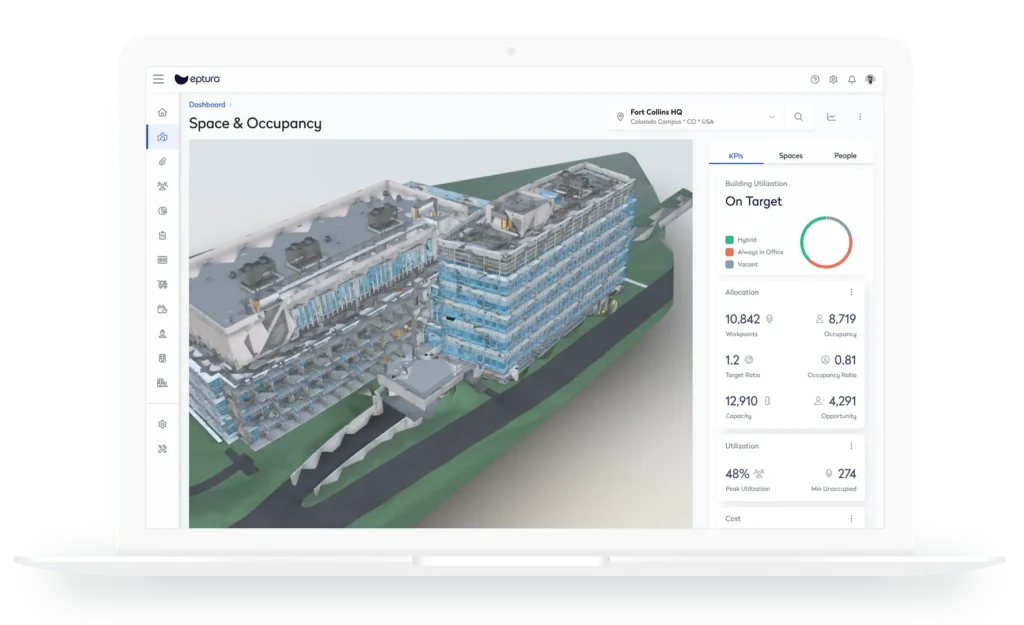
The new frontier of workplace security
Workplace technology is evolving at an unprecedented pace. Large organizations are integrating smart access control, visitor management, occupancy tracking, and space planning tools to improve efficiency and security. These systems make it easier to manage office spaces, track visitors, and support hybrid work models. But as enterprises embrace cloud-based, interconnected workplace technology (worktech) solutions, they also expand their attack surface for cyber threats.
For IT leaders, the challenge isn’t just deploying workplace technology — it’s securing it. And keeping it secure.
Every visitor log, employee access record, and space reservation contains sensitive data that could be targeted in a cyberattack or data breach. If a bad actor infiltrates your worktech platform, they could compromise building security, employee privacy, and compliance with industry regulations.
The question isn’t whether workplace technology needs cybersecurity protections — it’s how to ensure that it does. We’ll explore the cybersecurity fundamentals large enterprises need to protect their workplace technology, from Transport Layer Security (TLS) encryption to zero-trust security models and regulatory compliance.
The growing cybersecurity risks in workplace technology
Most organizations have rigorous cybersecurity protocols for their enterprise applications, cloud storage, and email systems. But workplace technology platforms often don’t receive the same level of scrutiny. This creates security blind spots, making visitor logs, access control data, and space utilization insights vulnerable to attack.
The risks are more significant than many IT leaders realize. Consider what happens if an unauthorized entity gains access to your worktech platform:
- Sensitive occupancy data could be exploited. If an attacker accesses real-time occupancy data, they could pinpoint when offices are vacant, creating physical security risks for employees and assets.
- Workplace access credentials could be stolen. If visitor management or access control systems are compromised, bad actors could gain unauthorized entry into your facility.
- Non-compliance fines and legal consequences could follow. In highly regulated industries like finance, healthcare, and government, failing to secure workplace data can result in severe regulatory penalties and reputational damage.
In this environment, IT leaders must assume that workplace systems will be targeted and implement strong cybersecurity protections accordingly.
The role of transport layer security (TLS) in protecting worktech
One of the most critical yet overlooked components of cybersecurity in workplace technology is Transport Layer Security (TLS). TLS is the backbone of secure internet communications, encrypting data as it moves between users, workplace applications, and cloud servers.
Without TLS encryption, every data exchange between employees, visitors, and workplace management systems is vulnerable to interception. Attackers can launch man-in-the-middle (MITM) attacks, stealing or manipulating data before it reaches its intended destination.
A secure worktech platform should always use TLS 1.3, the latest version of the protocol, which enhances encryption speeds, reduces vulnerabilities, and protects against cyber threats. IT leaders should ensure that all workplace management software vendors are compliant with TLS best practices, preventing unencrypted data from becoming a security risk.
But TLS is just one layer of protection. Enterprises need a multi-pronged cybersecurity strategy to defend their workplace technology.
Securing worktech: Cybersecurity best practices for large organizations
-
Implement multi-factor authentication (MFA) to secure access
Passwords alone are no longer enough. Every worktech platform should require multi-factor authentication (MFA) to prevent unauthorized access — even if credentials are compromised. MFA ensures that only verified users can access visitor logs, office entry records, and space reservation data, reducing the risk of account takeovers.
-
Enforce a zero-trust security model for workplace data
A zero-trust security model assumes that every user and device must continuously prove their legitimacy before accessing sensitive workplace information. This approach limits who can access data, what data they can see, and how they interact with it.
For workplace technology, zero-trust means:
- Restricting access to only essential users. Employees shouldn’t be able to see visitor data unless necessary for their role.
- Requiring continuous authentication for sensitive actions. Approving a high-level visitor or accessing security footage should trigger an additional security check.
- Segmenting workplace networks to limit potential damage. If a cyberattack occurs, isolating worktech platforms from other enterprise systems prevents an attack from spreading.
-
Encrypt data both in transit and at rest
TLS secures data in transit, but workplace technology platforms must also encrypt data at rest to protect stored visitor records, security logs, and occupancy trends. This ensures that even if a breach occurs, stolen data remains unreadable without decryption keys.
-
Conduct regular security audits and penetration testing
Workplace technology platforms should undergo regular penetration testing to identify vulnerabilities before they can be exploited. IT leaders should work with vendors that proactively conduct security audits and maintain SOC 2, ISO 27001, and GDPR compliance.
Choosing a secure workplace technology provider
Cybersecurity isn’t just an internal responsibility — it also depends on the security standards of your worktech provider. When evaluating workplace management solutions, IT leaders should assess three critical areas:
-
Security certifications and compliance standards
A trustworthy worktech provider should meet global cybersecurity standards, including SOC 2 Type II, ISO 27001, and GDPR. These certifications demonstrate ongoing commitment to data protection and risk management.
-
Secure data storage and privacy protections
IT leaders should verify where and how workplace data is stored. Ask whether the provider uses encrypted cloud storage, geo-redundant backup systems, and access-controlled environments to protect sensitive information.
-
Integration with enterprise security infrastructure
Workplace technology should seamlessly integrate with existing enterprise security systems, such as Single Sign-On (SSO), Identity Access Management (IAM), and cybersecurity monitoring platforms. Secure API connections prevent worktech solutions from becoming security weak points.
The future of cybersecurity in workplace technology
As organizations continue to digitize their office environments, the need for robust cybersecurity measures in workplace technology will only grow. The shift toward hybrid work, cloud-based access control, and AI-driven occupancy tracking creates new vulnerabilities that demand proactive security strategies.
For IT leaders, the path forward is clear:
- Ensure that every worktech solution meets enterprise-grade security standards.
- Adopt encryption, MFA, and zero-trust security models to protect sensitive workplace data.
- Partner with vendors that prioritize cybersecurity through compliance, penetration testing, and secure integrations.
Cybersecurity isn’t a one-time implementation — it’s an ongoing commitment. Large organizations that take a proactive, security-first approach will not only protect their workplace data but also create a safer, more resilient digital infrastructure for the future of work.
The future of work is an interconnected, automated one — one that is so sophisticated it demands superior levels of cybersecurity. Find out why it’s important in our latest cybersecurity eBook.





